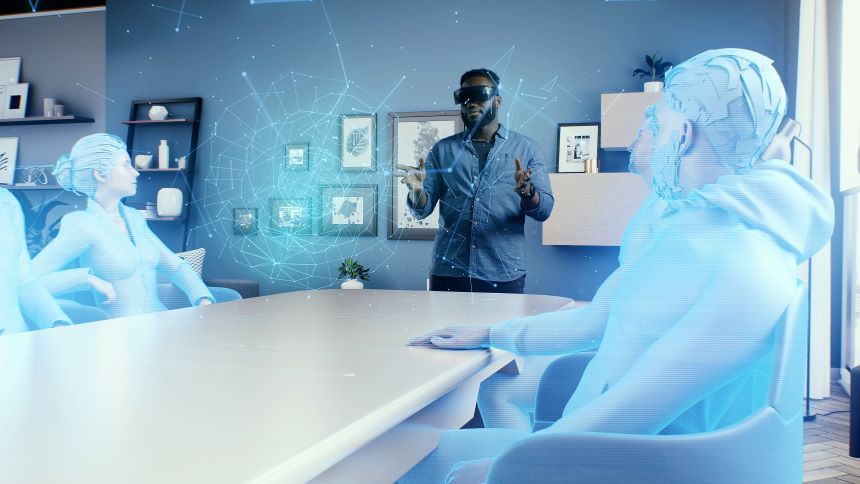
By facilitating a deeper understanding and retention of knowledge through hands-on activities that promote critical thinking, problem-solving, and collaboration, AI roleplay in learning is causing a shift to active and engaging learning paradigms.
The Benefits of AI Roleplay Learning
From personalizing learning experiences to providing targeted feedback and optimizing educational outcomes, AI roleplay in learning promises several benefits. Some of these include:
- Upgrading Critical Employee Skills: Enhance employee productivity by enabling learners to practice and refine critical skills through immersive and interactive simulations in a risk-free environment.
- Creating Realistic, Practice-Driven Environments: Improve understanding by engaging learners with authentic scenarios and simulations through realistic, practice-driven environments, and providing immediate feedback and adaptive challenges.
- Personalizing Learning Experience: Maximize the effectiveness of skill development by providing learners with tailored learning experiences to individual needs.
- Driving Operational Success through Enhanced Performance: Enhance operational success by cultivating competence and confidence through realistic scenarios that allow employees to practice and refine skills.
- Fostering High-Value, AI-Enabled Work Environments: Empower employees to adapt to technological advancements and acquire the necessary skills to leverage AI tools for greater productivity.
Implementing AI Roleplay Learning Programs
Implementing AI roleplay in learning programs requires careful planning for proper alignment with organizational goals and learners’ needs. Strategizing for the successful implementation of roleplay in learning begins with establishing clear learning objectives and defining specific skills that learners must acquire. This serves as a guidance to design relevant content, select appropriate AI technologies, and measure the effectiveness of training programs.
While implementing roleplay in learning, organizations must consider creating AI avatars that demonstrates distinct human personalities and characteristics. These avatars, whether 3D rendered or virtual humans, simulates real-life interactions and scenarios. This will not only help provide learners with realistic experiences and personalized feedback but also improve engagement and skill development.
Consider using AI roleplay in learning to provide the context and atmosphere for simulated interactions, such as the setting, characters, and scenario. This background can help set the scene for immersive learning experiences, where learners can apply their skills and engage in realistic scenarios.
Further, organizations can design scenarios to reflect real-world situations that may be relevant to employees’ roles and interests. Adding objections, challenges, and interaction points can help simulate realistic obstacles and opportunities to encourage critical thinking, problem-solving, and interpersonal skills development for an enriching experience and greater engagement. While designing roleplay content, organizations can consider creating scenarios, dialogue, and character profiles with compelling narratives and interactive elements, for meaningful skill acquisition.
Encouraging learners to actively engage with scenario-based learning and providing constructive feedback can help promote continuous improvement and a better understanding of complex concepts.
It is essential that organizations use analytics and assessments to monitor and measure performance in AI roleplay in learning programs, as well as to identify areas for improvement, personalize learning experiences, and optimize training efficiency. Organizations must also acknowledge and incentivize success in roleplay in learning programs with rewards such as badges or certificates to motivate learners, encourage active participation, and provide positive reinforcement.
Lastly, to ensure that training remains relevant and adaptive to evolving learner needs, organizations must adopt an iterative approach that uses feedback and evaluation data to continuously refine content, technology, and instructional methods.
The Mechanics of AI Roleplay Learning
AI roleplay in learning encompasses the integration of artificial intelligence algorithms to simulate interactive scenarios and provide instantaneous feedback. To maximize the impact of AI roleplay in learning, it is essential that organizations design learning resources that are personalized, accessible, interactive, and engaging. This may require incorporating multimedia elements, real-life examples, and interactive exercises.
By adapting content, delivery methods, and assessment criteria, organizations can use customization effectively to ensure that learning initiatives address specific skill development needs and help drive progress toward strategic objectives.
The use of multiple delivery formats, interactive activities, and personalized pathways can allow organizations to accommodate diverse learner needs and create a more inclusive and effective learning environment.
Furthermore, by developing incremental learning paths, from basic to expert levels, organizations can provide learners with structured progression and a deeper understanding of complex concepts. This may require breaking down the learning content into manageable steps and increasing the difficulty levels gradually.
Real-World Applications of AI Roleplay Learning
AI roleplay in learning is being widely used in a variety of use cases, including training customer service representatives and medical education to simulate patient encounters, among others. Organizations can effectively use AI roleplay in learning for:
- Performance Reviews: Provide employees with personalized assessments and targeted coaching for effective professional development.
- Navigating Difficult Conversations: Help employees build confidence and competence in addressing challenging situations by practicing communication strategies and conflict resolution techniques through realistic scenarios and interactive simulations.
- Conducting Effective Interviews: Simulate several interview scenarios to help learners make better hiring decisions and deliver superior candidate experiences by practicing interviewing skills, offering personalized feedback, refining questioning techniques, and improving active listening skills.
- Enhancing Customer Service: Provide simulated scenarios for employees to practice handling customer inquiries, complaints, and interactions. Offer personalized feedback and adaptive challenges to enable employees to improve communication skills, empathy, and problem-solving abilities.
- Mastering Sales Pitches: Engage learners in simulated sales scenarios to help customize pitches to different customer needs, refine pitch delivery techniques, develop persuasive communication skills, and overcome objections.
- Sharpening Debate Skills: Enable learners to practice presenting and defending their viewpoints while developing critical thinking, persuasive communication, and negotiation skills through simulating argumentative scenarios, interactive debates, and personalized feedback.
- Negotiating with Confidence: Simulate negotiation scenarios to enable learners to practice strategies, tactics, and techniques, as well as to refine negotiation skills and develop the ability to achieve mutually beneficial outcomes.
- Engaging in Free-Form Conversations: Provide learners with simulated scenarios and interactive platforms to practice spontaneous dialogue. Natural language processing (NLP) and adaptive responses can help learners engage in active conversations, receive immediate feedback, and refine communication skills.
Conclusion
In today’s ever-evolving and competitive landscape, organizations need innovative approaches to drive engagement and enhance workforce performance. By creating realistic and interactive learning environments, AI roleplay in learning can help organizations upskill their employees with essential skills such as communication, problem-solving, and negotiation in a risk-free setting.
Organizations that embrace AI roleplay in learning are better positioned to equip their workforce with the relevant skills and confidence needed to gain a competitive edge. With tailored learning paths, adaptive challenges, and personalized training, AI roleplay in learning can empower organizations to reskill and upskill employees, improve productivity, and contribute to overall organizational success.



